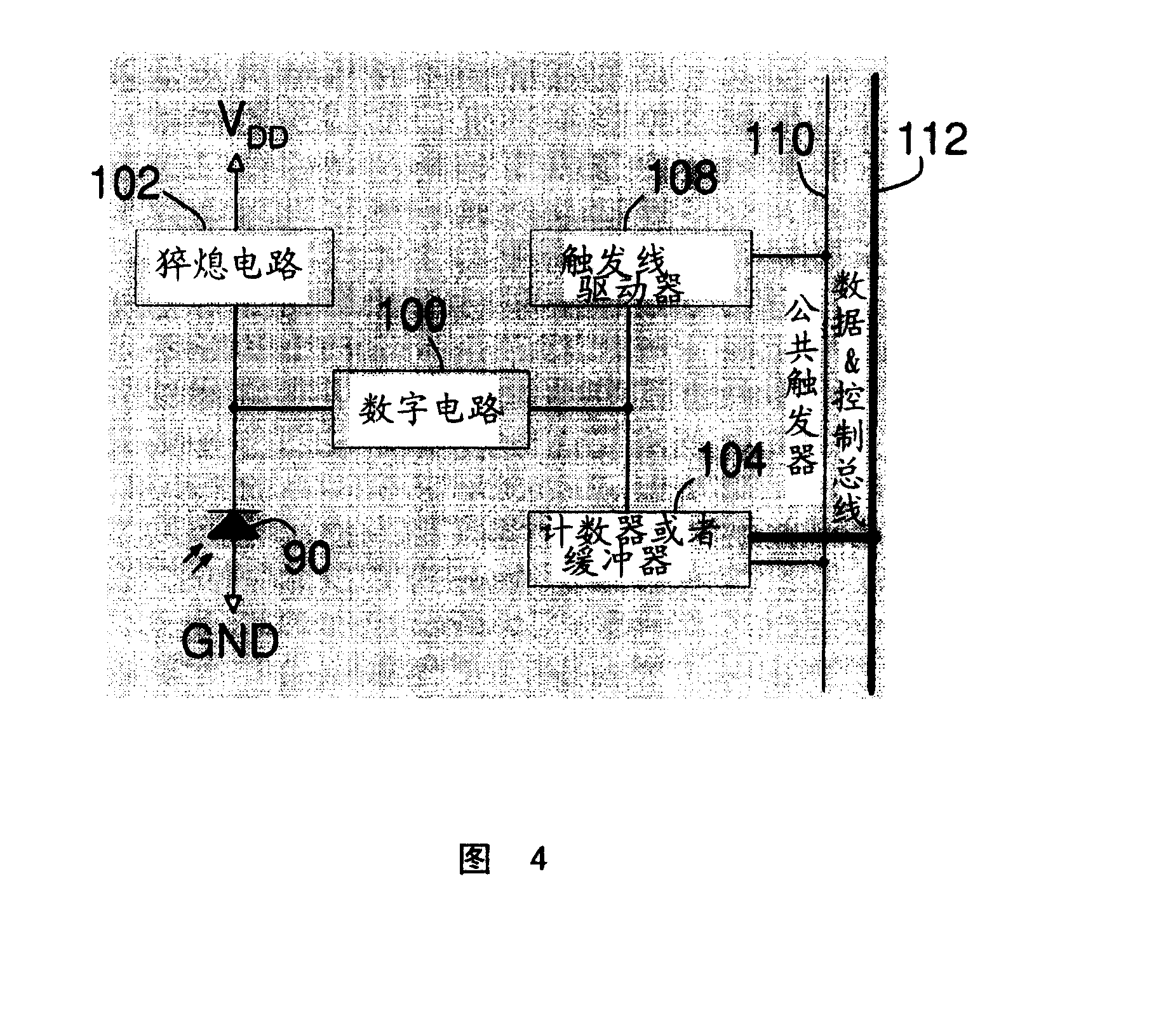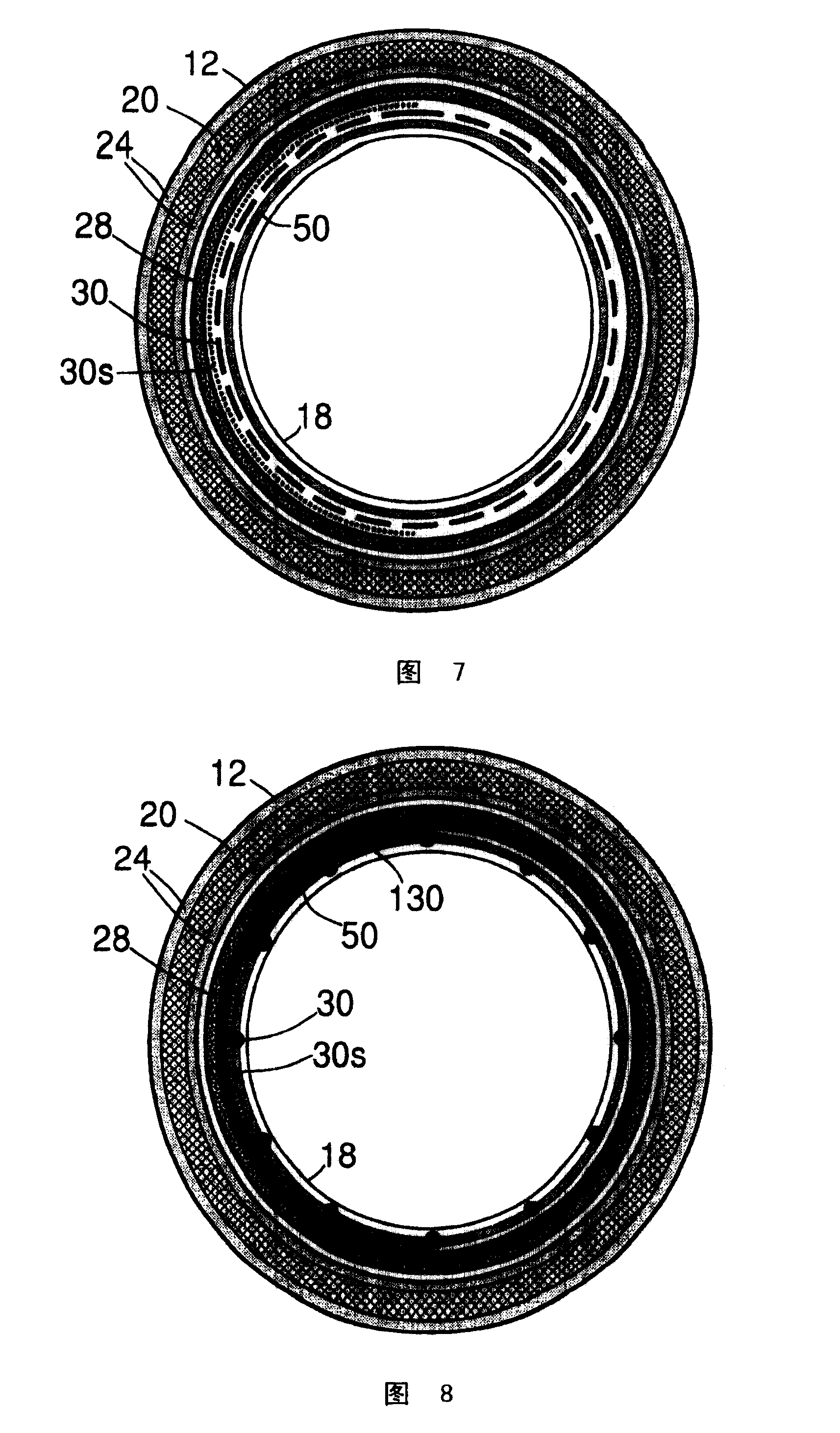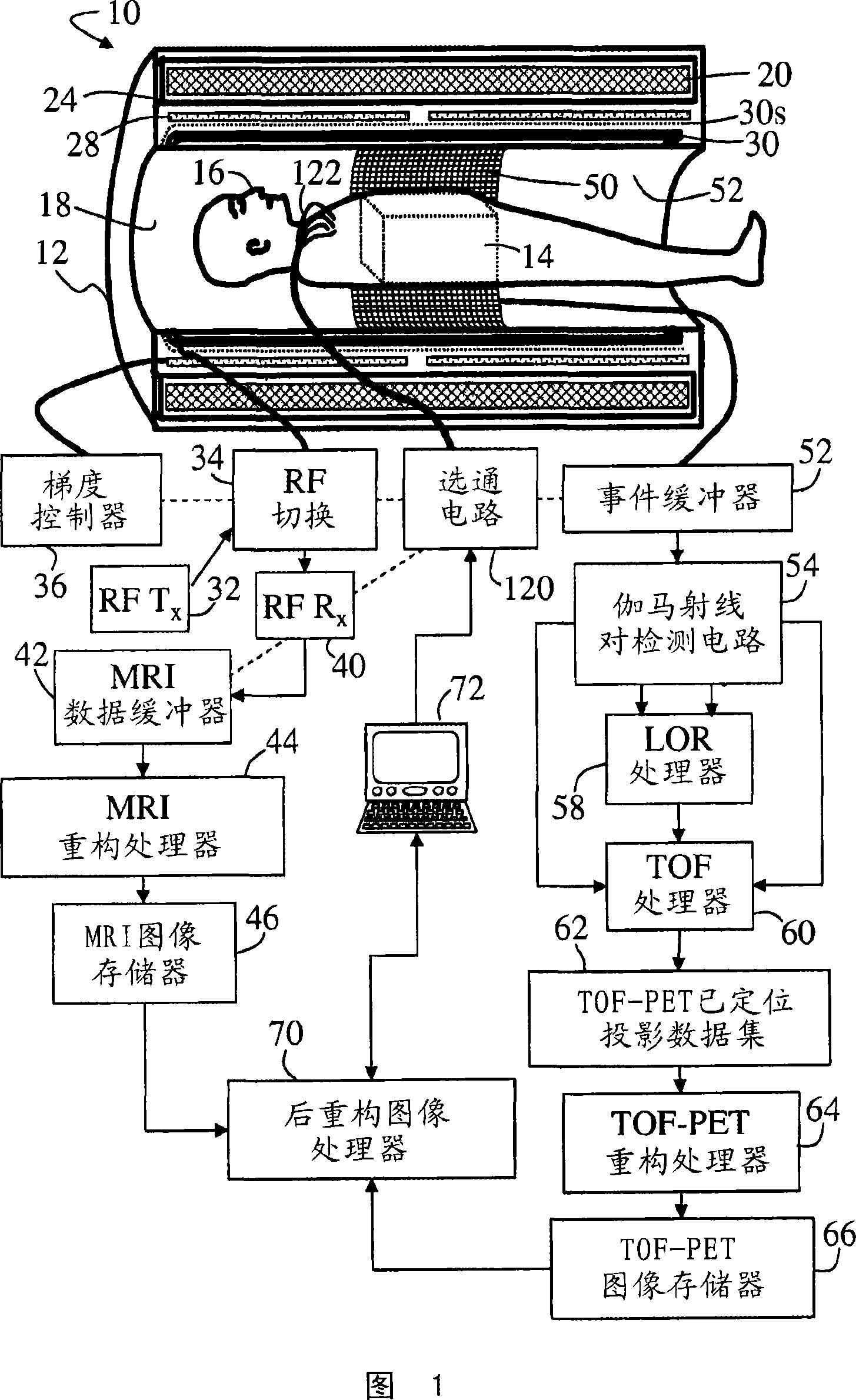Pet/mr scanner with time-of-flight capability
A scanner and imaging system technology, applied in the field of imaging technology, can solve problems such as high noise and low radiation count rate of detectors, and achieve the effect of simplifying the structure
- Summary
- Abstract
- Description
- Claims
- Application Information
AI Technical Summary
Problems solved by technology
Method used
Image
Examples
Embodiment Construction
[0023] Referring to FIG. 1 , a combined positron emission tomography / magnetic resonance imaging (PET / MRI) scanner 10 includes a common scanner housing 12 that defines an imaging region 14 (indicated in phantom in FIG. 1 ) in which the patient or Further imaging objects 16 are arranged in the imaging region 14 . A decorative bore liner 18 of the scanner housing 12 delineates a cylindrical bore or opening 14 of the housing in which an imaging subject 16 is disposed. A main magnet 20 arranged in the housing 12 generates a main magnetic field in the imaging region 14 . Typically, the main magnet 20 is a superconducting magnet surrounded by a cryogenic transistor 24; however, resistive main magnets may also be used. Magnetic field gradient coils 28 are disposed within or on housing 12 to superimpose selected magnetic field gradients on the main magnetic field within imaging region 14 . Typically, magnetic field gradient coils include coils for generating three orthogonal magnetic...
PUM
 Login to View More
Login to View More Abstract
Description
Claims
Application Information
 Login to View More
Login to View More - R&D
- Intellectual Property
- Life Sciences
- Materials
- Tech Scout
- Unparalleled Data Quality
- Higher Quality Content
- 60% Fewer Hallucinations
Browse by: Latest US Patents, China's latest patents, Technical Efficacy Thesaurus, Application Domain, Technology Topic, Popular Technical Reports.
© 2025 PatSnap. All rights reserved.Legal|Privacy policy|Modern Slavery Act Transparency Statement|Sitemap|About US| Contact US: help@patsnap.com



